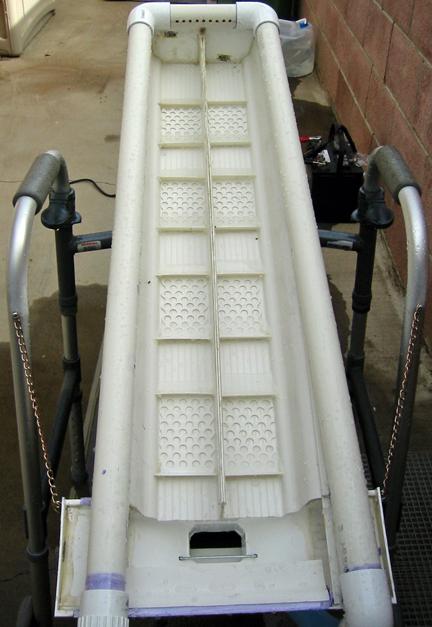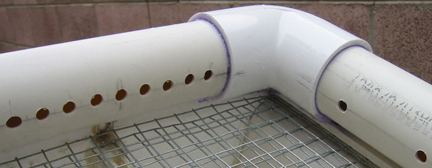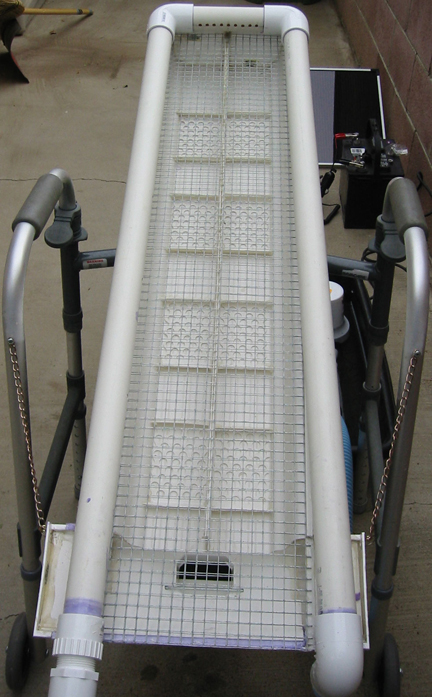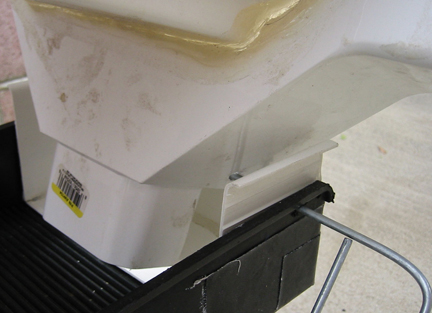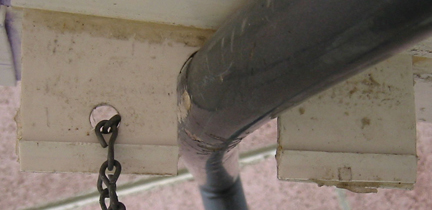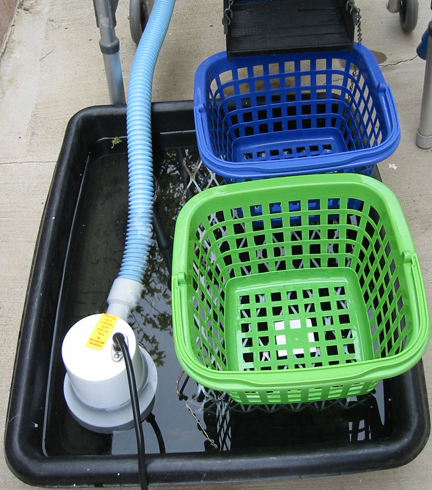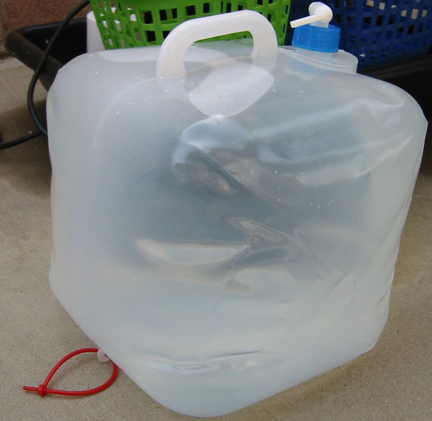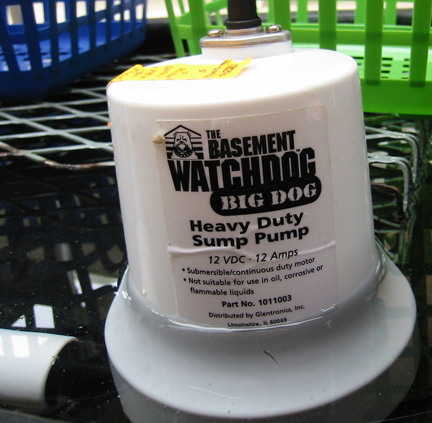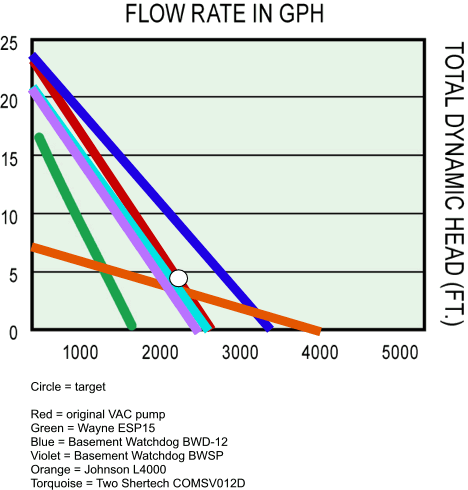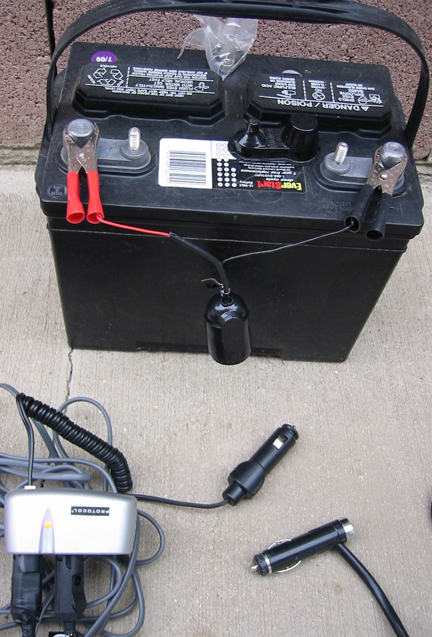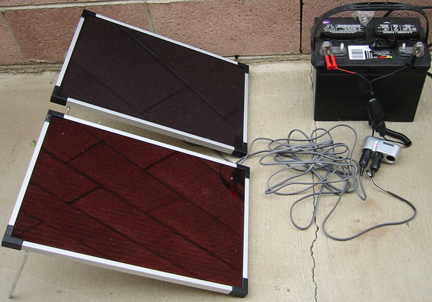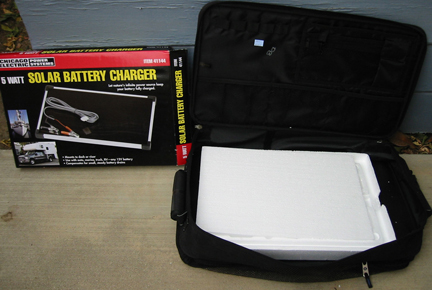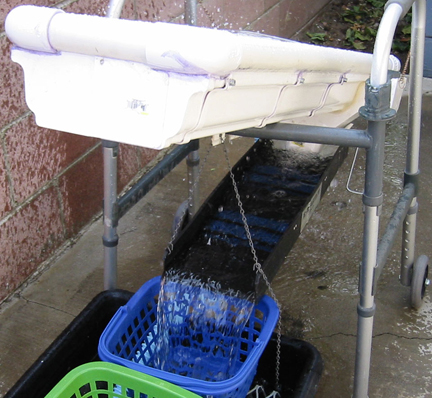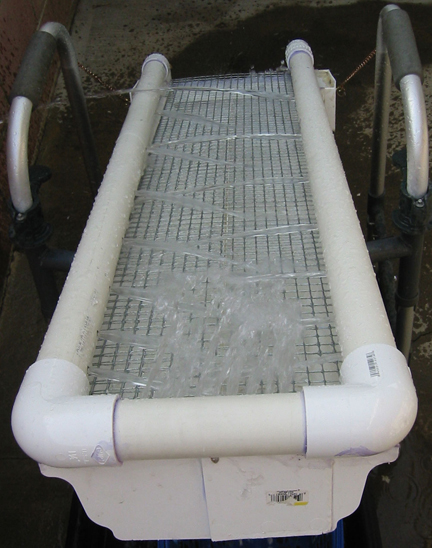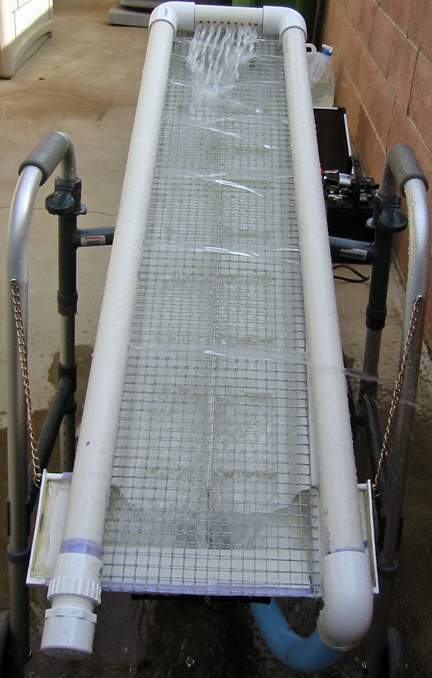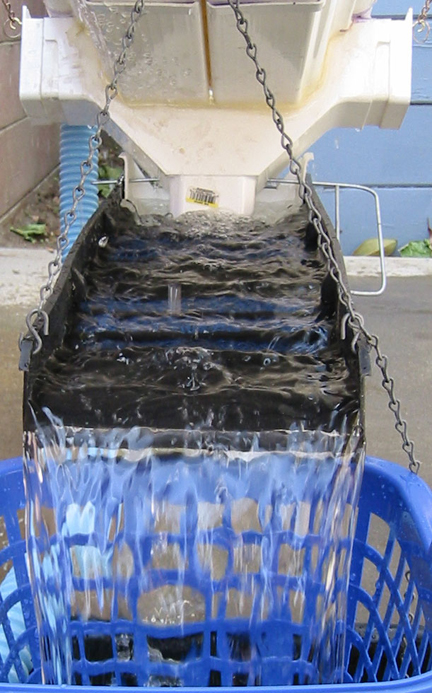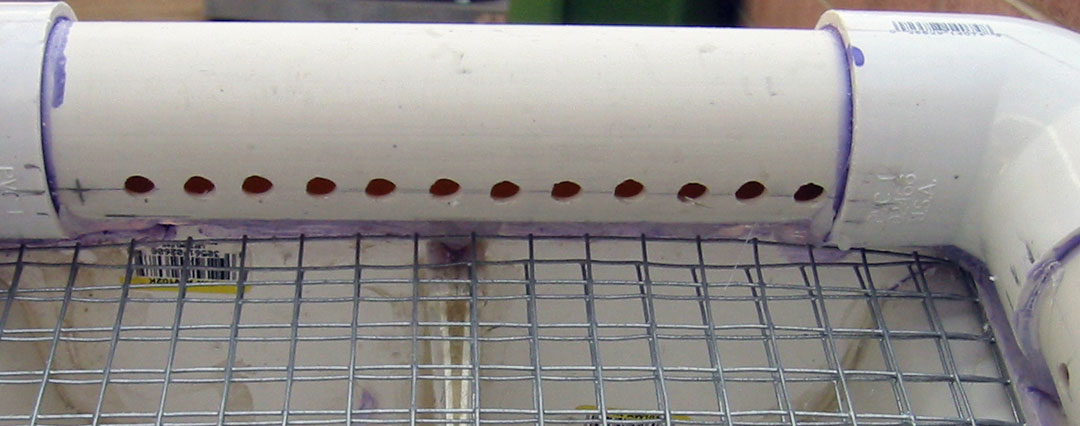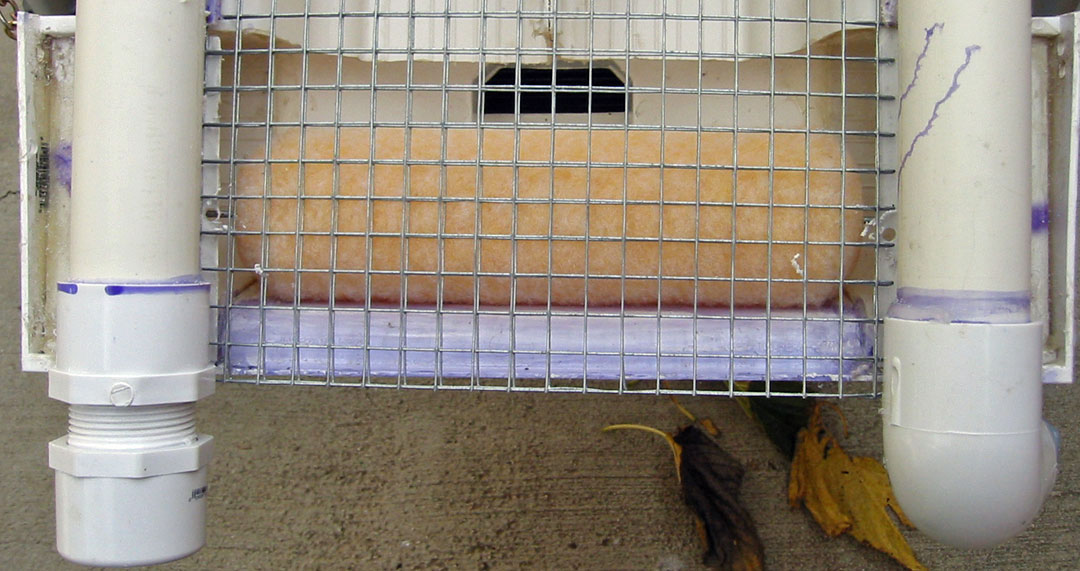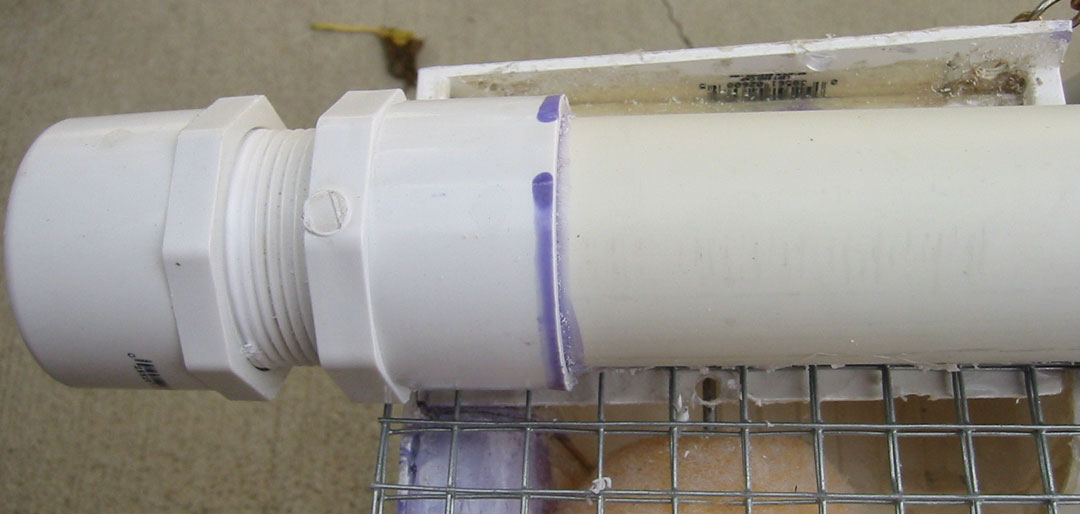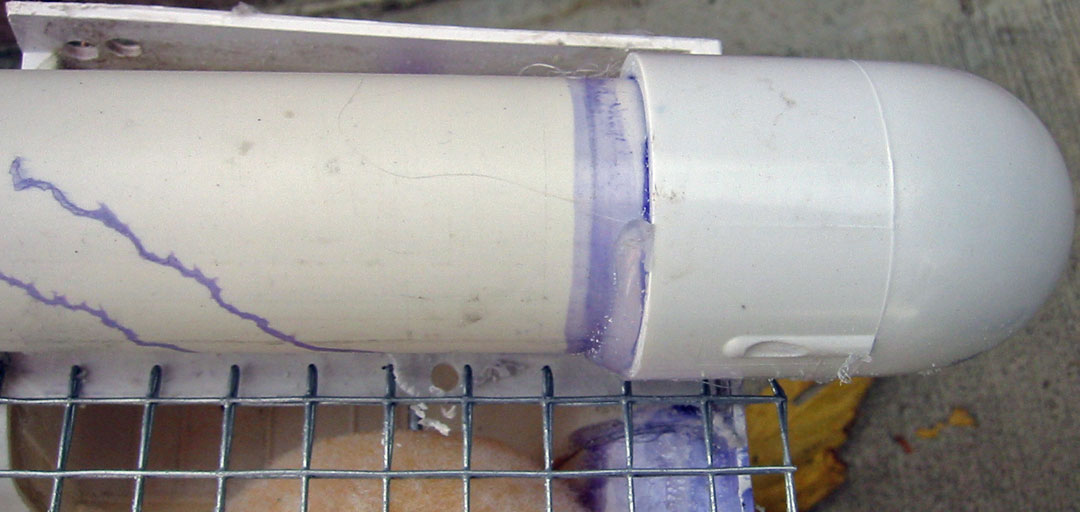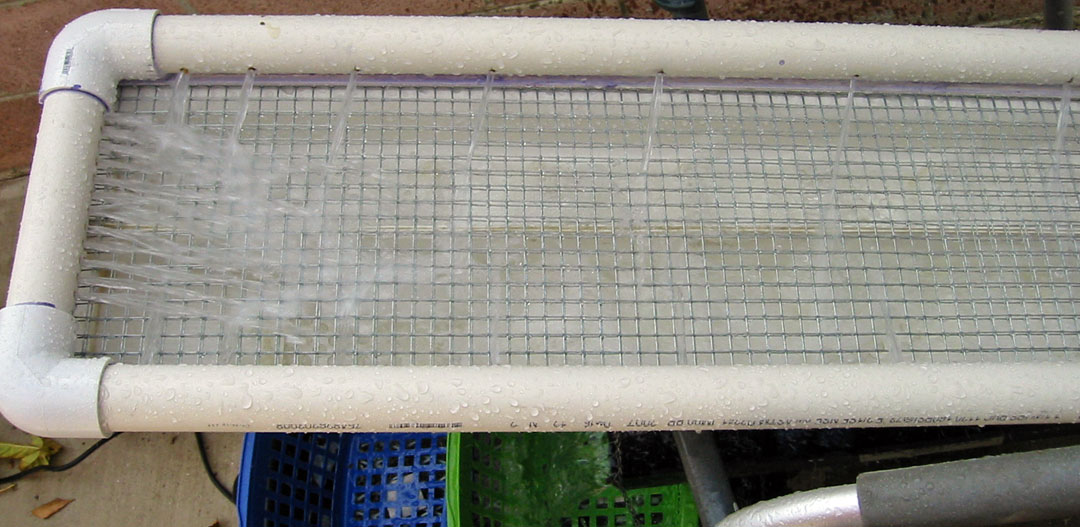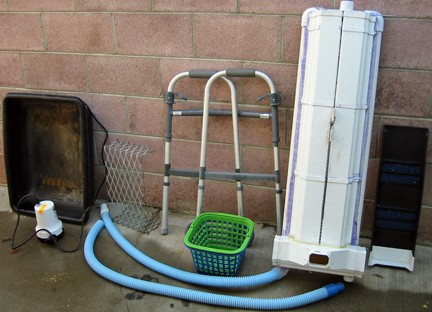Recirculating Sluice System Evolution
First Iteration of PVC System
The riffles are rain gutter leaf excluders cut to the width of the gutter. I bent the edges to the proper angle for riffles, and hot-glued them to the gutter.
I drilled holes through the sluice and center drain in order to hinge one end of the sluice on the separator using a rod made from ceiling tile wire.
I drilled 9 1/4" holes in the head pipe.
and 7 in the side pipes starting 1" from the elbow. The next hole is 2" away from the first. The next is 3" away from the second, and so forth.
The edges of the gutter pair were notched to accommodate the PVC fittings to the get the PVC pipe as close to the gutter edges as possible. The pool hose support brackets I installed prohibited me from notching as far as needed, so the gap was filled with sealant-adhesive.
The original 41" x 10" aluminum expanded metal screen deflected water out of the separator, particularly because it was oriented 90-degrees from the normal orientation for a sluice box (inexpensive scrap). I replaced it with 1/2" wire fencing folded in half. Both slide easily into the groves provided for gutter leaf protectors.
I neglected to angle the elbow out to allow the screen to be slid past it, so I had to angle the pipe as it was glued onto the gutter.
I screwed hooks into the downspout to which chains from the walker could be attached and adjusted to provide the optimum slope for tumbling the rocks and larger gravel.
I again suspended a backpack sluice from the separator to catch the fine gold.
I replaced the metal end cap for the sluice with a cap made from gutter scraps. It keeps water from splashing out its inlet. It is secured to the sluice with the same rod that secures the sluice to the separator.
Scrap gutter sides glued together between the gutters provide a means of hanging the separator on the walker, and providing a support for the sluice support chain attached to hooks on the sluice, so the angle of the sluice can be adjusted for optimum performance.
The sluice empties into Dollar Store baskets that will be lined with screen door screen. They sit on an expanded metal platform salvaged from the metal separator such they will drain into a small concrete mixing tub that happens to fit nicely between the waker legs. Two are used so one can drain precious water into the tub while the other is catching the unwanted output of the sluice. When the blue basket fills, the green basket is emptied so it can replace the blue basket. I may add a platform for a third basket to allow more drain time to save more water.
Only 5 gallons are needed to fill the concrete mixing tub. This one was purchased from Harbor Freight for $7. I bought four to accommodate about four hours of recirculating sluicing. Replace the red loop intended as a lifting handle when emptying the container with a zip tie, because the loop detaches too easily.
The pump normally sells with a basement backup system, but the vendor will sell it separately for $110.
Power for the pump is provided by an automobile battery. It need not be this large, but I thought one large enough to start my van would be nice. One with thicker wires would be better. The battery terminal clamps were cut from the solar panel wires and soldered to an automobile cigarette lighter socket.
A three-female-to-one-male adapter connected to the battery provides a place to connect two solar panels and the pump. The pump is enabled by plugging it into the adapter, and disabled by removing the adapter, because the pump is enabled and disabled too infrequently to warrant a switch.
The panels I bought on sale from Harbor Freight for $40 each. They produce 0.04 ma at 19 VDC in the shade on a cloudy day. They produce 0.55 ma at 24.4 VDC oriented toward the sun in October.
I purchased a suitcase from a recycling store for $5 that accommodates the solar panels, adapter and cables.
I second-guessed my test orientation of the holes (about 5 degrees down), which worked fine, and glued the pipes together such that the holes were all in the same plane to squirt straight across the screen to insure the entire screen is covered.
Unfortunately, a deviation of the hole angle and position caused some jets to strike the opposite pipe above the centerline, deflecting the water out of the separator and one jet to go entirely over the other side. Now I have to replace the pipes.
Good sluice angle and flow.
This time I marked the centerline and 1/4" above and below it on the elbows, and aligned the top pipe at the centerline and the side pipes at the lower mark.
The deflector at the bottom of the separator failed to salve the problem of water sloshing out of the separator or dripping off the screen.
A paint roller was an easy fix, but a brush would be better.
I drilled a hole in the end cap cover (screen slide) to stop water from running down it.
Note how the water flow directions affects the jet direction from perpendicularly drilled holes.
That's why I drilled one less hole on the downstream side of the top pipe.
Getting ready for storage.
Running.
Using just one screen should reduce the deflected water loss.
Need to replace the roller with a big deflector. Double screen deflects water and may be unnecessary for strength. Leaves in screen can deflect jets.
| W. T. Holmes | Prospecting | Original Metal System | First PVC System | First Field Test | Second Field Test | Updates |
